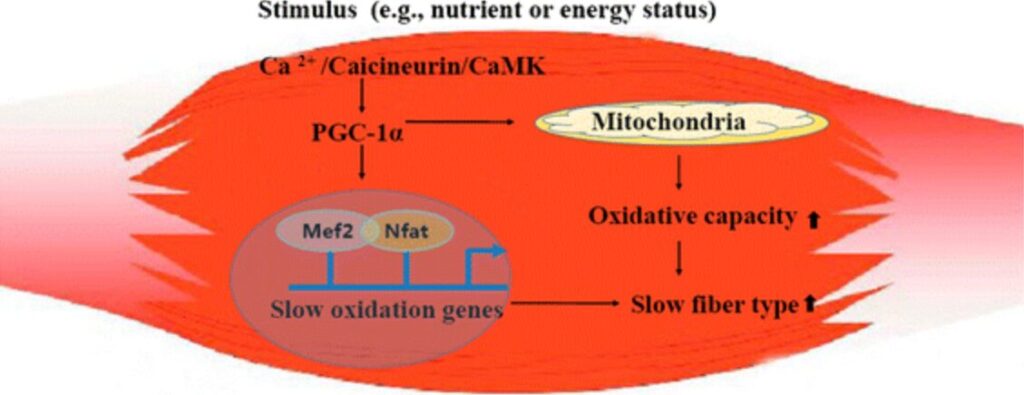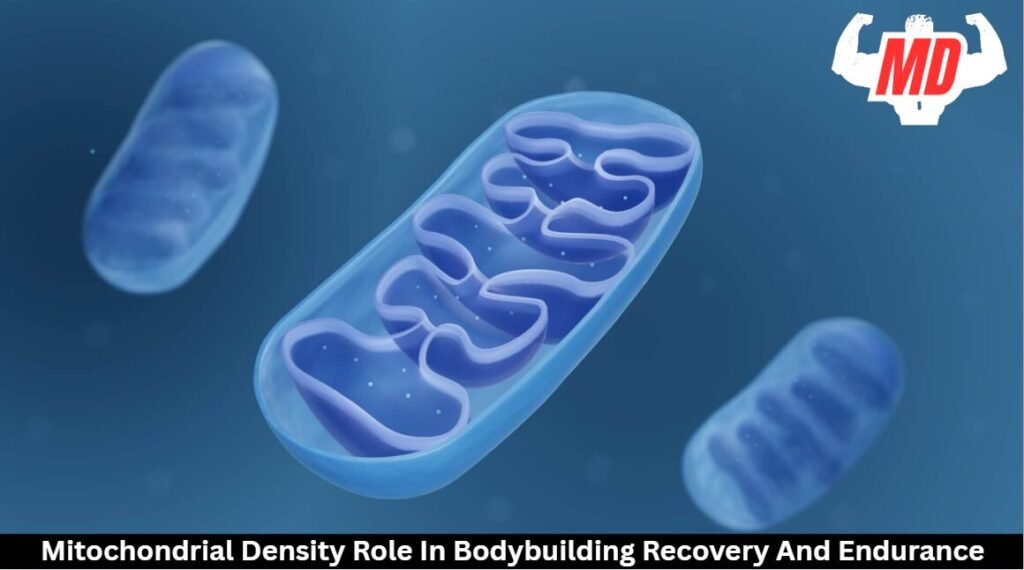Mitochondria serve as your muscles’ power plants, directly impacting recovery and endurance in bodybuilding. Higher mitochondrial density allows for more efficient ATP production, helping you sustain workouts longer and recover faster between sessions. You can boost this density through strategic high-volume training, proper nutrition rich in CoQ10 and B vitamins, and recovery techniques like contrast therapy.
Tracking your between-set recovery times reveals these cellular adaptations in real-world performance gains.
Mitochondrial Function in Muscle Tissue
While often called the powerhouses of the cell, mitochondria play an even more essential role in muscle tissue than in most other body systems. Your muscles require enormous amounts of cellular energy, which mitochondria produce through oxidative phosphorylation. It is the process that converts nutrients and oxygen into ATP.
What makes bodybuilding unique is how your training directly influences mitochondrial density. When you consistently push your muscles to their limits, they respond through muscle adaptation, creating more mitochondria to meet the increased energy demands. This process, known as mitochondrial biogenesis, is your body’s way of becoming more efficient at producing energy.
The higher your mitochondrial density becomes, the more effectively your muscles can sustain work and recover afterward.

High-Volume Training Protocols for Increasing Mitochondrial Density
Although many bodybuilders focus primarily on intensity, strategic high-volume training stands out as one of the most effective methods for boosting mitochondrial density. Incorporate more total sets with moderate repetitions (10-15) per exercise, keeping rest periods shorter (60-90 seconds) to create metabolic stress that triggers mitochondrial adaptation.
Try implementing 2-3 higher volume days weekly, where you perform 20-30 total sets for major muscle groups. This approach enhances endurance performance while maintaining muscle size. Your training volume should gradually increase over time as fatigue resistance improves.
Supersets and circuit training are particularly effective, creating continuous demand for ATP and forcing your body to become more efficient at energy production. Remember that improved mitochondrial density directly translates to faster muscle recovery between both sets and training sessions.

Nutritional Strategies to Support Mitochondrial Biogenesis
Along with training, good nutrition is an important part of keeping your mitochondria healthy and helping them grow. The food you eat has a direct effect on the energy pathways that help you recover and perform better. Certain nutrients can even cause new mitochondria to form.
To improve your metabolism, eat foods that are high in CoQ10, B vitamins, and omega-3 fatty acids. Antioxidants in colorful fruits and vegetables protect mitochondria that are already there from damage and help make new ones. Timing your carbs strategically will refill your glycogen stores without getting in the way of your hypertrophy goals.
Don’t forget about small nutrients like iron, zinc, and magnesium. They’re important cofactors in the biochemical reactions that make mitochondria. Think about having extra calories now and then to give your body enough energy to build muscle and improve the function of your mitochondria.

Recovery Techniques That Enhance Mitochondrial Adaptation
In addition to nutritional strategies, targeted recovery techniques can significantly expedite mitochondrial adaptations between training sessions. Contrast therapy helps the body make more mitochondria and speeds up recovery after hard training. You can improve your muscles’ use of oxygen without putting too much stress on them by doing light cardio during strategic active recovery sessions.
It is not possible to skip optimizing your sleep; this is when your body does the most work to repair its mitochondria. Think about using breathing techniques that temporarily limit the amount of oxygen available. It will cause changes that increase aerobic capacity and mitochondrial density.
Compression clothing may also help by improving blood flow to muscles, which brings in nutrients that are needed for mitochondrial growth and gets rid of metabolic waste that slows recovery.
Measuring and Tracking Mitochondrial Improvements in Athletes
While aesthetic changes are immediately visible to bodybuilders, quantifying mitochondrial adaptations requires more sophisticated assessment methods. You’ll need specialized tests to track improvements in your cellular powerhouses that drive bodybuilding performance.
Muscle fibers that recover faster often make more ATP. To keep track of how much work you can do, see how many reps you can do at the same weight before you fail. You can also test your blood lactate levels before and after workouts to see how much lactic acid has built up. If the levels are lower at the same intensity, it means that your mitochondria are working better.
Experts use more advanced assessments such as VO2 max testing and muscle biopsies, but they typically reserve these methods for elite athletes. For practical purposes, keep training logs that document endurance improvements alongside your strength gains to monitor mitochondrial adaptations indirectly.
Frequently Asked Questions
Does Mitochondrial Density Vary Between Fast-Twitch and Slow-Twitch Muscle Fibers?
Yes, slow-twitch muscle fibers have considerably higher mitochondrial density than fast-twitch fibers. You’ll find this difference enables slow-twitch fibers to excel at endurance activities while fast-twitch fibers prioritize explosive power.
Can Certain Supplements Directly Damage Mitochondrial Function in Bodybuilders?
Yes, some supplements can harm your mitochondria. Excessive antioxidants may disrupt signaling, while certain pre-workouts with stimulants, NSAIDs, and anabolic steroids can damage mitochondrial function when used improperly or excessively.
How Does Aging Affect Mitochondrial Density in Competitive Bodybuilders?
As you age, your mitochondrial density naturally declines, compromising recovery and endurance. You’ll need more strategic training, adequate rest periods, and targeted nutrition to maintain mitochondrial function for competitive bodybuilding performance.
Do Anabolic Steroids Impact Mitochondrial Health and Recovery Capacity?
Yes, anabolic steroids can negatively impact your mitochondrial health by altering bioenergetics and causing oxidative stress, potentially compromising your recovery capacity despite the initial performance gains they provide.
Can Genetic Factors Limit Potential Improvements in Mitochondrial Density?
Yes, your genetic makeup can limit mitochondrial density improvements. You’ll still see gains with training, but your genetic ceiling determines maximum potential compared to others with more favorable mitochondrial genetics.



